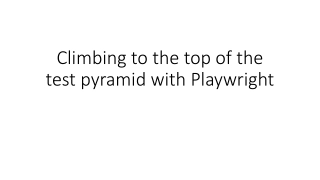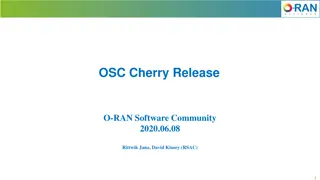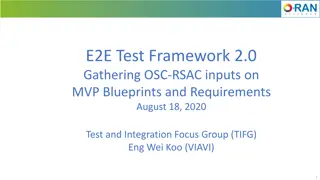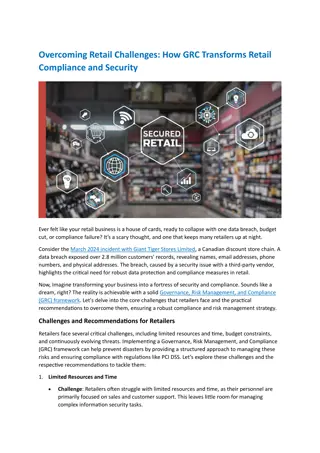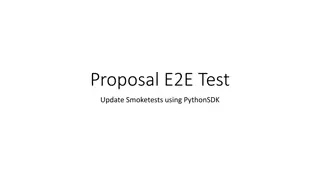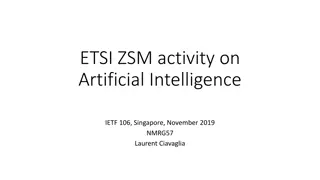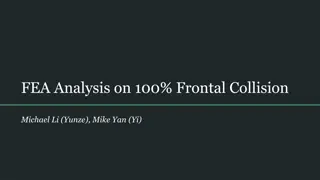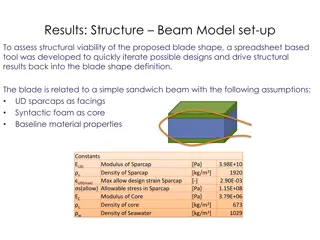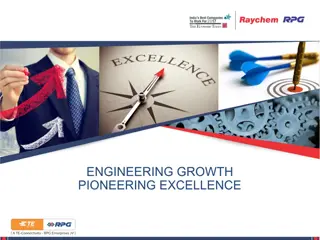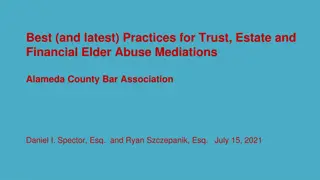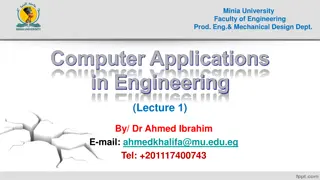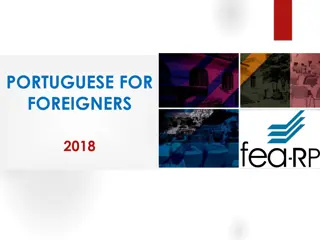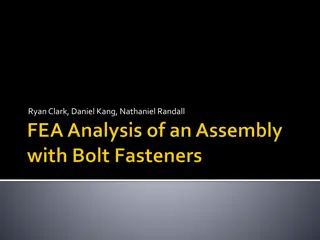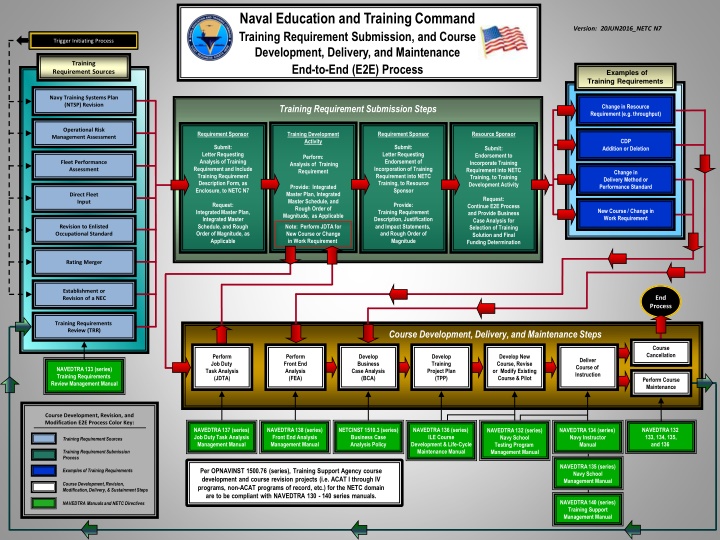
Naval Education and Training Command: End-to-End Training Process
Discover the complete process from training requirement submission to course development, delivery, and maintenance at the Naval Education and Training Command. Learn about the Front End Analysis (FEA) and why it is essential for effective training outcomes.
Download Presentation

Please find below an Image/Link to download the presentation.
The content on the website is provided AS IS for your information and personal use only. It may not be sold, licensed, or shared on other websites without obtaining consent from the author. If you encounter any issues during the download, it is possible that the publisher has removed the file from their server.
You are allowed to download the files provided on this website for personal or commercial use, subject to the condition that they are used lawfully. All files are the property of their respective owners.
The content on the website is provided AS IS for your information and personal use only. It may not be sold, licensed, or shared on other websites without obtaining consent from the author.
E N D
Presentation Transcript
Naval Education and Training Command Training Requirement Submission, and Course Development, Delivery, and Maintenance End-to-End (E2E) Process Version: 20JUN2016_NETC N7 Trigger Initiating Process Training Examples of Training Requirements Requirement Sources Navy Training Systems Plan (NTSP) Revision Change in Resource Requirement (e.g. throughput) Training Requirement Submission Steps Operational Risk Management Assessment Requirement Sponsor Requirement Sponsor Resource Sponsor Training Development Activity CDP Submit: Submit: Submit: Addition or Deletion Letter Requesting Analysis of Training Requirement and Include Training Requirement Description Form, as Enclosure, to NETC N7 Letter Requesting Endorsement of Incorporation of Training Requirement into NETC Training, to Resource Sponsor Endorsement to Incorporate Training Requirement into NETC Training, to Training Development Activity Perform: Fleet Performance Assessment Analysis of Training Requirement Change in Delivery Method or Performance Standard Provide: Integrated Master Plan, Integrated Master Schedule, and Rough Order of Magnitude, as Applicable Direct Fleet Input Request: Request: Provide: Continue E2E Process and Provide Business Case Analysis for Selection of Training Solution and Final Funding Determination New Course / Change in Work Requirement Integrated Master Plan, Integrated Master Schedule, and Rough Order of Magnitude, as Applicable Training Requirement Description, Justification and Impact Statements, and Rough Order of Magnitude Note: Perform JDTA for New Course or Change in Work Requirement Revision to Enlisted Occupational Standard Rating Merger Establishment or Revision of a NEC End Process Training Requirements Review (TRR) Course Development, Delivery, and Maintenance Steps Course Cancellation Perform Job Duty Task Analysis (JDTA) Perform Front End Analysis (FEA) Develop Business Case Analysis (BCA) Develop Training Project Plan (TPP) Develop New Course, Revise or Modify Existing Course & Pilot Deliver Course of Instruction NAVEDTRA 133 (series) Training Requirements Review Management Manual Perform Course Maintenance Course Development, Revision, and Modification E2E Process Color Key: External Training Requirement Sources NAVEDTRA 132 133, 134, 135, and 136 NAVEDTRA 136 (series) ILE Course Development & Life-Cycle Maintenance Manual NAVEDTRA 137 (series) Job Duty Task Analysis Management Manual NAVEDTRA 138 (series) Front End Analysis Management Manual NETCINST 1510.3 (series) Business Case Analysis Policy NAVEDTRA 134 (series) Navy Instructor Manual NAVEDTRA 132 (series) Navy School Testing Program Management Manual Training Requirement Sources Training Requirement Submission Process OPNAV N1 Training Requirement Sources Examples of Training Requirements NAVEDTRA 135 (series) Navy School Management Manual OPNAV N1 Training Requirement Sources Per OPNAVINST 1500.76 (series), Training Support Agency course development and course revision projects (i.e. ACAT I through IV programs, non-ACAT programs of record, etc.) for the NETC domain are to be compliant with NAVEDTRA 130 - 140 series manuals. Course Development and Revision Process Modification, Delivery, & Sustainment Steps Course Development, Revision, NAVEDTRA 140 (series) Training Support Management Manual NAVEDTRA Manuals and NETC Directives
The Fun, Fabulous Front End Analysis (FEA) Why are FEAs required? Always performed after the JDTA Follow steps in NAVEDTRA 138, Front End Analysis Management Manual Required per NETCINST 1500.6A
To Start Need Information Objectives In Teaching Order Content Types Determined Delivery Strategies Selected Assessment Strategy Sample Test Questions
Content Types Fact: Specific and unique data Concept: Category with multiple examples Process: Flow of events or activities Procedure: Step-by-step actions Principle: Adapting guidelines For Sailor 2025, for a task-based section: Procedure or Principle
Practice How to enter data into CPM is a __________ The E2E development system is a __________ Completing the media analysis of the FEA is a ______________ Open-ended questions are a__________ Abraham Lincoln was the 16th President of the United States is a ______________
Delivery Strategies What are some delivery strategies? Instructional design is much more than ordering information or activities Need to determine how a learner will interact with content
CPM Delivery Methods Interactive Multimedia Instruction (IMI) Instructor Led Training (ILT) - Class Instructor Led Training (ILT) - Lab Instructor Led Training (ILT) - Onboard Training Blended
What are some blended learning strategies for this scenario? Instructional strategy recommendations are for a blended learning solution media types consisting of: Instructor/tutor IMI with ICW/SIM/electronic management systems CAI, LMS/electronic publications. Traditional print and digital materials. Trainers/training devices component trainers Media delivery modes: CBT (78.35%) ILT (55.27%) LAB (53.75%)
NETC FEA Template The NETC FEA has how many steps? NAVEDTRA 138 Appendix A is the FEA template Each step should be completed in order
FEA Step 1: Reason for Conducting NETC FEA What are the triggers for an FEA? Some possible triggers include: Training Requirement Review (TRR) Revision to an Enlisted Occupational Standard Fleet Feedback Formal Course Review Rating Merger As Directed by the CCA A New System not Addressed in the Acquisition Process
FEA Step 2: Document Existing AS-IS Training Requirements What are some documents you can gather to capture existing training requirements?
FEA Step 3: Document TO-BE Training Requirements From learning objectives developed from JDTA Objectives are entered on the FEA Worksheet on the same line as the AS-IS objective, if a matching objective exists This is how you begin to establish the gap
FEA Step 4: Identify Training Gaps Compare TO-BE objectives with the AS-IS objectives Note the gap in the column in the center of the FEA Worksheet between TO-BE and AS-IS
FEA Step 5: R3 Using existing content in a new learning event: Reuse No modification to the instructional treatment, context, or content Repurpose Some modifications to the instructional treatment, context, or content Reference As a resource for generating ideas for new content
Repurposing Existing Content Review existing content and decide: Which objectives Percentage of content Where in the proposed course How much new content Performance-based = main content Knowledge-based = supporting content
FEA Steps 1-5 Practice Complete Assignment Sheet 1-6-3-1 for homework.
FEA Step 6: Media Selection Completed at the objective level by SPL/KPL Questions help determine the best delivery method, typical recommendations: KPL1 IMI KPL2 even split between ILT and IMI SPL1 IMI (simulation) or labs Blended learning solution includes a combination of instructional delivery types
Media Selection Tool (MST) Detailed (i.e. per EO) but needed as an input to the BCA. Review Page 7-8, NAVEDTRA 138, Chapter 7 Media Selection YN PS AA MST example
FEA Step 7: Recommendations and Solutions Final Learning Objectives Content Type Delivery Method Length Cognitive Level ISD Considerations
FEA Step 8: Output Statement Narrative summary for the Curriculum Control Authority (CCA) Includes high-level summary of training solutions and alternative courses of action that support the Business Case Analysis
FEA Step 9-Final Approval Prepare completed NETC-FEA with all associated source documents Prepare NETC-FEA Final Approval Notification Letter (Appendix B of 138) for routing to: 1. Curriculum Control Authority (CCA) 2. NETC N72 3. Requirements Sponsor
Is the FEA Effective? How can the effectiveness of the FEA be evaluated? Assess the instructional soundness of proposed training: Alignment of objectives with assessments Media delivery suggestions Solutions to any gaps that were identified
Evaluation Strategy It may sound simple, but it is effective: Compare the completed FEA to the guidance. Were all the steps followed appropriately? If something was omitted, is it documented somewhere? Check BCA Instruction (NETCINST 1510.3): Adequate data on courses of action? Adequate data for a good foundation for that document

